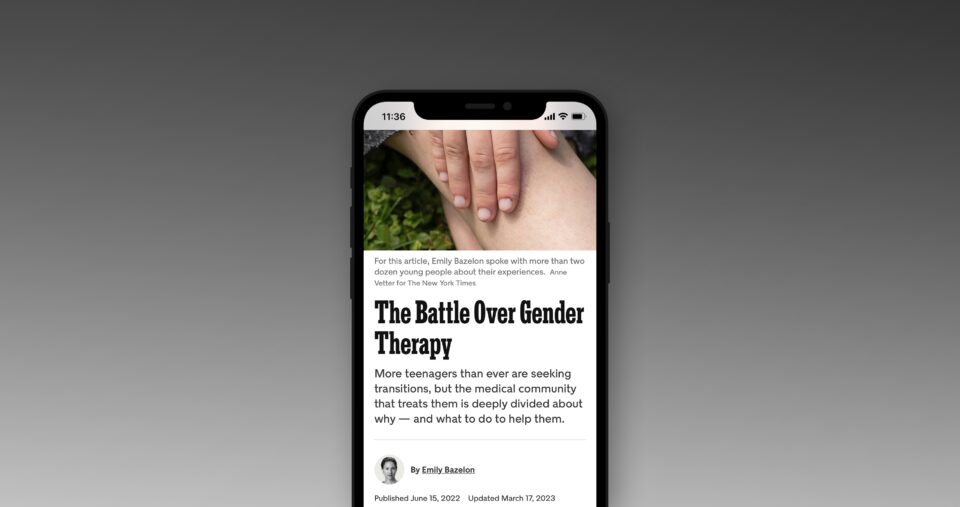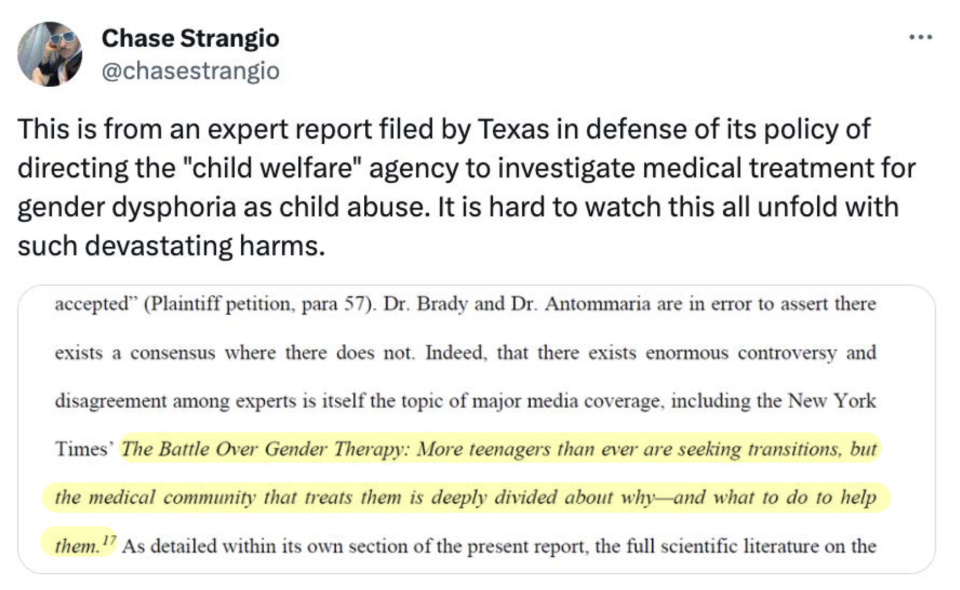Profiting From Moral Panic
How Profit-Driven Media Outlets Empowered the Anti-Trans Movement
Simone Unwalla
January 21, 2024
Introduction
In 2018, there were nineteen bills targeting transgender people in state legislatures across the United States. In 2020, there were sixty. Today, there are five hundred and forty-one. The avalanche of legislative efforts to restrict and punish trans people has increased in both pace and severity over the past few years. The crusade started with laws purporting to “protect children,” but it quickly evolved into a broader legislative assault on nearly all aspects of trans existence. This includes laws criminalizing trans people’s use of public restrooms, laws prohibiting essential gender-affirming health care, and “drag bans” that are so broadly defined as to threaten trans and gender-nonconforming people’s ability to simply exist in public as themselves. This rapid escalation would not have been possible without a dominant narrative that positioned transness as a political debate and that validated the claims that transness poses a threat to children. This article examines that narrative and the profit-driven media outlets that perpetuated it.
When conservatives started invoking anti-trans rhetoric to rally support among the Political Right, mainstream media outlets reinforced the anti-trans movement’s unscientific “child protection” claims, sensationalized them, and profited from the resulting panic. We know the story of how conservative outlets like Fox News brazenly vilified the trans community. But another important story is how liberal-leaning outlets like the New York Times helped anti-trans panic catch fire under a veil of objectivity and through misleading “both-sides” reporting. Outlets like the Times didn’t just capitalize on transphobic rhetoric, they actively legitimized it and spread it to new audiences.
Like the conservative coverage, the liberal coverage stirred up moral panic. Moral panic translated to clicks, profit, and an increasingly captive audience. At the same time, non-stop coverage from reputable outlets like the Times allowed anti-trans activists to capture dominant narratives, turn transness into a political “debate,” and set the stage for the rapidly evolving legislative landscape that now threatens the trans community’s existence. Many outlets have profited from perpetuating anti-trans hysteria, but this article focuses on the distinct culpability of the New York Times — an outlet long regarded as the “paper of record” that has peddled some of the most notoriously anti-trans reporting under the guise of neutrality.
A Battle Within The New York Times
In February 2023, over a thousand current and former New York Times contributors signed an open letter expressing “serious concerns about editorial bias in the newspaper’s reporting on transgender, non-binary, and gender nonconforming people.” The letter condemned the outlet’s coverage, highlighting that “the Times has in recent years treated gender diversity with an eerily familiar mix of pseudoscience and euphemistic, charged language, while publishing reporting on trans children that omits relevant information about its sources.” “Plenty of reporters at the Times cover trans issues fairly,” the letter reads. “Their work is eclipsed, however, by what one journalist has calculated as over 15,000 words of front-page Times coverage debating the propriety of medical care for trans children published in the last eight months alone.”
The Times is “follow[ing] the lead of far-right hate groups in presenting gender diversity as a new controversy warranting new, punitive legislation,” the letter stated. And that choice has tremendous consequences. “The natural destination of poor editorial judgment is the court of law,” the signatories wrote before listing off instances in which policymakers used Times reporting to justify dehumanizing anti-trans policies and laws across the country.
“Some of us are trans, non-binary, or gender nonconforming, and we resent the fact that our work, but not our person, is good enough for the paper of record,” the letter reads. “Some of us are cis, and we have seen those we love discover and fight for their true selves, often swimming upstream against currents of bigotry and pseudoscience fomented by the kind of coverage we here protest.” The letter closed by calling the New York Times “a workplace made hostile by bias.”
A second letter organized by GLAAD, a leading LGBTQ non-profit, also criticized the New York Times’ irresponsible and biased coverage of trans people. It called for outlet to stop “platforming lies, bias, fringe theories, and dangerous inaccuracies” in its trans reporting. A coalition of more than 100 organizations and leaders signed onto GLAAD’s letter, demanding fair coverage and calling out the Times for its uniquely damaging reporting. “We are not having this conversation with other mainstream media outlets about problematic coverage,” GLAAD wrote, “only the Times.”












